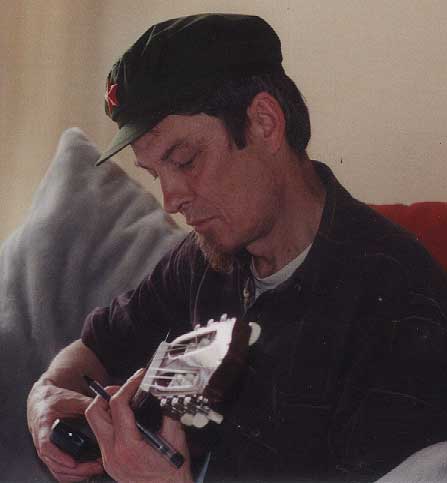Six seconds make a seventh? Is time expanding? How do they do that? Simple! The same way as two thirds make a fifth! Two fifths make a ninth, but three of them make a thirteenth, which is also twelve seconds. Try this on your music teacher and watch him get his head around it.
Classical musical theory can’t multiply and refuses to add up. The terminology sucks too: “a fifth” is an interval, but “the fifth” is a note.
It doesn’t help that there are 31 notenames for twelve notes. You may want to hear how horrible that would sound if all 31 were allowed equal rights:
In fact the only argument I ever hear in defense of this cock-eyed theoretical tradition is that it has been around longer than you and that’s what we are used to. Well I have to admit, I’m used to it too. But we should always bear in mind the adage that “the map is not the territory“, and here we have an extreme example. So when I wanted to write down the kind of mental operations an improviser performs instantly without thinking, there was no way I could carry on with that stuff. Melodies are interval structures, independently of the key they happen to be in. Tonalities are a distraction from the business of playing what you hear. MOVES aims to notate intervallic movements to help you develop your melodic reflexes. So the simple answer to the question “why use MOVES notation?” is: “Because it adds up.” And it honestly doesn’t take seven years of music school to get used to either.
Follow me on Twitter @jazzpanflute








These comments on theory seem to have got some people’s back up, and that’s great. However my goal is not to demolish anyone’s pet theories but to offer a map towards a given goal that is announced at the top right of this page. Many improvising students get lost in discussions about what they are – or are not – allowed to play and in what contexts. And teachers might lock horns about whether the tritone substitution is (or is not) the same as the Neapolitan Sixth. For the student with a horn in his hand who is waiting to play something, this is a waste of his time and worse still, a drain on his energy and enthusiasm. There is no need to include historical architectural notes in a rail map that’s designed to get you from point A to point B.
LikeLike
Reblogged this on Intervallic Awareness for Improvisers and commented:
This post stirred up a hornet’s nest the first time I posted it. But just remember the adage: the map is NOT the territory. And if you’re planning a car trip, a subway map won’t help you. Likewise, music can be represented in whatever way best suits your needs or your project. And here the project is “learning to play like singing in the shower”.
LikeLike
Hi, I do believe this is an excellent blog.
I stumbledupon it 😉 I am going to revisit once again since i have book marked it.
Money and freedom is the greatest way too change,
may you be rich and continue to guide other people.
LikeLike
Thank you for your comment and kind wishes Bernadine! Who knows, lucky breaks still happen 🙂
LikeLike